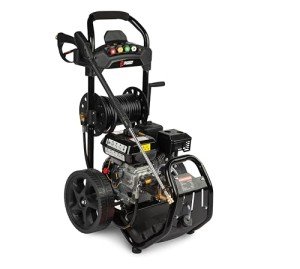24-Hours To Improve Powertools
The Comprehensive Guide to Power Tools: Understanding Their Types, Uses, and Maintenance
Power tools are indispensable in the modern workshop, making it possible for tasks that would otherwise be laborious and lengthy when performed with hand tools. Varying from fundamental drills to complicated woodworking machines, power tools offer effectiveness and precision that can significantly change the method experts and enthusiasts approach their tasks. This post checks out the various types of power tools, their applications, maintenance tips, and regularly asked questions.
Kinds Of Power Tools
Power tools are usually categorized into two primary groups: cordless and corded. Tools Online Store has its benefits and ideal uses.
1. Cordless Power Tools
Cordless tools operate on rechargeable batteries, offering higher mobility and ease of use. Some common types include:
- Cordless Drill/Driver: Essential for drilling holes and driving screws, a cordless drill is an essential in any toolbox.
- Cordless Circular Saw: Ideal for cutting lumber and other products, specifically when portability is required.
- Cordless Jigsaw: Useful for making complex cuts and curves in numerous materials.
- Cordless Impact Driver: Perfect for driving long screws and fasteners into tough materials quickly.
2. Corded Power Tools
While corded tools may be less portable, they typically offer more power and are frequently utilized for heavier-duty jobs. Key examples include:
- Table Saw: A fixed tool that uses accuracy cutting for woodworking projects.
- Miter Saw: Used for making precise crosscuts and miters in a workpiece.
- Angle Grinder: Useful for cutting or grinding metal and concrete.
- Drill Press: A stationary drill that permits achieving greater accuracy in drilling holes.
Contrast Table of Cordless and Corded Power Tools
Feature
Cordless Power Tools
Corded Power Tools
Movement
High
Restricted by power cord
Power
Less effective
More powerful
Weight
Lighter due to lack of cord
Heavier due to motor and cable
Battery Life
Minimal by battery life
Continuous power supply
Cost
Generally more pricey
Typically more cost effective
Applications of Power Tools
Power tools are used throughout various industries and activities. Comprehending the right tool for the job can improve efficiency and results. Some typical applications include:
- Construction Projects: Drills, saws, and nailers control job sites for framing and roof.
- Woodworking: Routers, sanders, and jointers help in creating complex and polished wood pieces.
- Automotive Repair: Impact wrenches and air compressors are crucial for dealing with lorries.
- Home Improvement: DIY lovers make use of various tools for restorations, repairs, and landscaping jobs.
Popular Power Tools and Their Uses
Here are some often used power tools along with their primary applications:
Power Drill:
- Used for drilling holes and securing screws.
- Can be found in various sizes for different applications.
Reciprocating Saw:
- Ideal for demolition work and cutting through materials like wood, metal, and drywall.
Sander:
- Used for smoothing surfaces, offered in different types such as orbital and belt sanders.
Router:
- Employed in woodworking for hollowing out an area in a piece of wood.
Nail Gun:
- A quick and effective tool for driving nails into wood and other products.
Upkeep Tips for Power Tools
Keeping power tools in optimal condition is important for safety and performance. Here are some upkeep pointers:
Regular Cleaning: Dust and particles can accumulate in power tools. Routine cleaning assists keep efficiency and extends tool life.
Examine Connections and Cords: Regularly check for fraying or damage to cables and connections. Change any damaged parts right away to prevent mishaps.
Hone Blades and Bits: Dull blades can reduce efficiency and accuracy. Routine sharpening ensures tidy cuts and faster operation.
Lubrication: Certain tools require regular lubrication. Seek advice from the user manual for particular suggestions.
Storage: Store tools in a dry environment and in their cases if available. This protects them from wetness and accidental damage.
Often Asked Questions (FAQs)
1. What safety gear should be worn when using power tools?
- It is necessary to use proper security equipment such as safety glasses, hearing protection, gloves, and a dust mask depending upon the tool in use.
2. How do I select the ideal power tool for a job?
- Consider the particular jobs you require to accomplish, the material you'll be working with, and the tool's power capability. Looking into tools suited for those jobs will aid in making the ideal option.
3. Are cordless tools as great as corded tools?
- Cordless tools provide benefit and portability, while corded tools offer more power for heavier tasks. Select based upon your specific requirements.
4. How often should power tools be maintained?
- Routine maintenance must be carried out routinely, ideally after every use. Comprehensive evaluations and servicing ought to be done at least as soon as a year.
5. What is the life expectancy of a common power tool?
- The life expectancy of power tools varies commonly depending upon usage and quality however normally varies from 5 to 15 years.
Power tools are important assets for both professionals and DIY lovers, offering efficiency and precision unlike any hand tool. Comprehending the various types, applications, and maintenance procedures is important for optimizing their potential and guaranteeing safety. With correct care and knowledge, these tools can serve users successfully for several years, eventually enhancing productivity and job results. By purchasing quality tools and adhering to upkeep rituals, one can make the most out of every task, regardless of size or intricacy.
